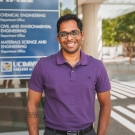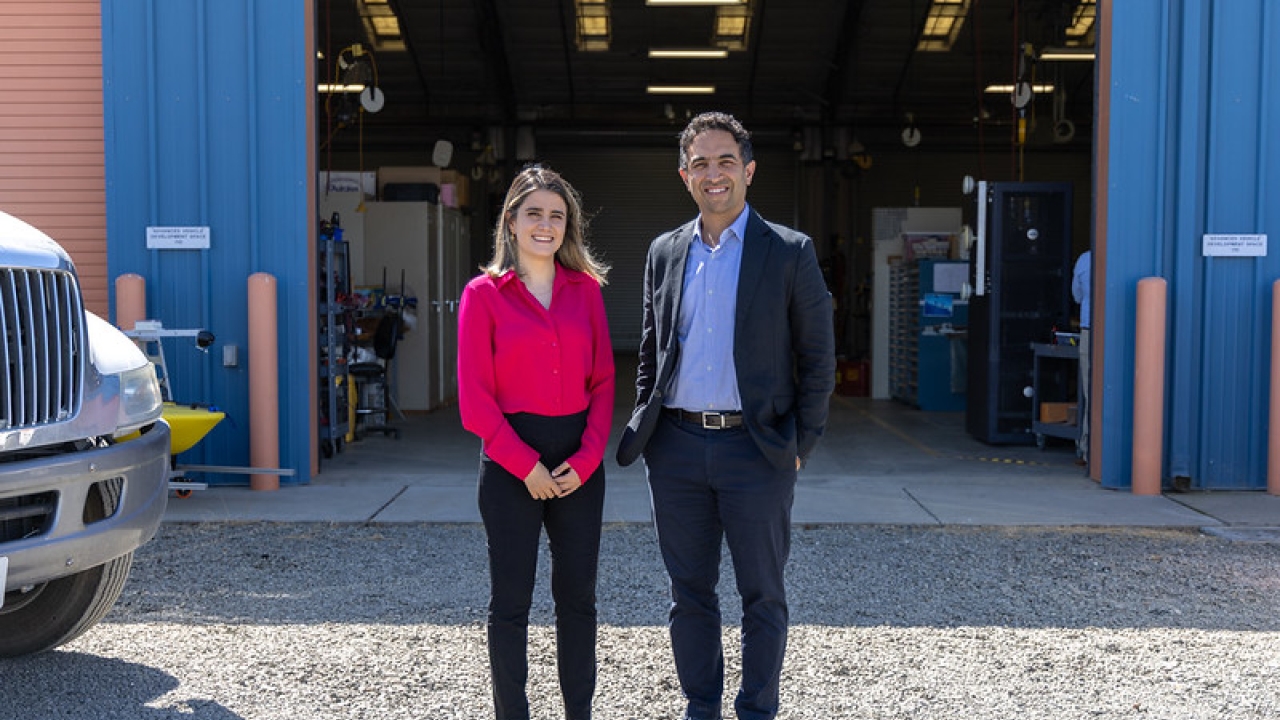
A Guiding Light: One Student's Drive for Discovery

This year has been a big one for Rachita Rana. While pursuing her Ph.D. in chemical engineering from the University of California, Davis, under the mentorship of associate professor in chemical engineering Ambarish Kulkarni, Rana received two major awards from the SUNCAT Summer Institute and North American Catalysis Society (Best Poster and the Kokes Award, respectively) for her research in environmentally friendly and energy-saving catalysts.
Rana was also selected to participate in the ChemE Rising Star workshop for women pursuing faculty appointments in chemical engineering at the Massachusetts Institute of Technology, where she will continue her academic path as a postdoctoral researcher after graduating this fall. Now, Rana looks back on her academic journey and forward to her next steps.
Let's start with your Ph.D. work. Can you talk about your research?
Currently, I find myself immersed in the captivating world of heterogeneous catalysis. (Heterogenous catalysis mainly involves solid-phase catalysts and gas-phase reactants in a cycle of molecular adsorption, reaction and desorption occurring at the catalyst surface, and enables faster, large-scale production of chemicals.) My research lies at the intersection of computational and experimental catalysis. It's an intriguing and interdisciplinary realm where the growing capabilities of molecular modeling meet the intricacies of hands-on lab work.
To be honest, I have been fascinated by catalysis and using synchrotron-based techniques to understand catalytic systems. Synchrotron-based techniques are advanced experimental methods that utilize radiation, generated by particle accelerators, to study the structure and behavior of materials at the atomic and molecular level. These techniques are valuable for understanding catalytic processes by providing detailed insights into the composition, morphology, and dynamics of catalysts during chemical reactions, aiding in the development of more efficient and sustainable catalytic systems.
What are some of the methods you use for this research?
I use density functional theory, a quantum chemistry method, for in-depth structural insights beyond experimental limits. Density functional theory, or DFT, is a computational approach used to model the electronic structure and properties of molecules and materials. DFT has enhanced my experimental work in catalysis by providing valuable insights into the energetics and mechanisms of catalytic reactions, helping me understand, design and optimize catalysts for improved performance.
Additionally, I've continued working with X-ray absorption spectroscopy, or XAS, an interest that began while earning my master's degree with Professor Ajay Dalai at the Canadian Light Source, University of Saskatchewan. X-ray absorption spectroscopy is a technique that investigates the electronic structure and bonding of elements in a sample by measuring the energy absorption of X-rays, providing information about the local atomic environment and oxidation states.
What is something you are particularly proud of in your research journey so far?
I take great pride in the innovative DFT/XAS method we've developed, which we refer to as "QuantEXAFS." This method empowers users to achieve a more quantitative interpretation of intricate XAS data.
I'd had some previous experience at the Canadian Synchrotron [when getting my master's], and I've always been fascinated with XAS. So, when I got the chance to work on an XAS-related project, it was mostly about diving into coding and figuring out how the method should function.
I remember the day vividly when, just 10 minutes before a meeting with collaborators, it all came together. What's cool about QuantEXAFS is that it's fully automated, unlike the traditional methods. It connects theory to XAS data and gives more accurate interpretations without human bias.
In a broader context, I believe this approach holds the promise of illuminating some of the enigmatic facets within operando experiments. Operando is like taking a sneak peek at molecules in action, catching them in the act, so scientists can see how they behave in their real-world scenarios. It's like a backstage pass to chemistry's live show.
What other things did you learn from your time at UC Davis that will stay with you?
My personal development has been enriched by the numerous workshops I've had the privilege to attend on campus, thoughtfully organized by Graduate Studies, Global Affairs, and other campus organizations. The workshop series "Exploring DEI to help create an inclusive workspace" and "Mentoring-Up" have left a lasting impact on me.
It's important to me to remember the value of a supportive and collaborative learning environment, mentorship, and the importance of diversity and inclusion in academia as I guide and mentor students in my own academic career.
Do you have any parting thoughts to share?
Approaching the conclusion of my Ph.D. journey, my heart is filled with immense gratitude. Professor Kulkarni, my co-advisor Professor Simon Bare at the Stanford Linear Accelerator Center, and other catalysis faculty on campus — Professor Bruce Gates and Associate Professor Coleman Kronawitter —have been my guiding stars, offering unwavering support and invaluable feedback. The chemical engineering department, in general, has been a nurturing ground for scientific discourse and collaboration, fostering growth.
On a personal level, an insatiable curiosity has been the heartbeat of my research odyssey. The relentless hunger for discovery and venturing into the unknown has been my guiding light. With the privilege of seizing numerous opportunities, I'm profoundly thankful for the chance to contribute to the advancement of knowledge in this field.





